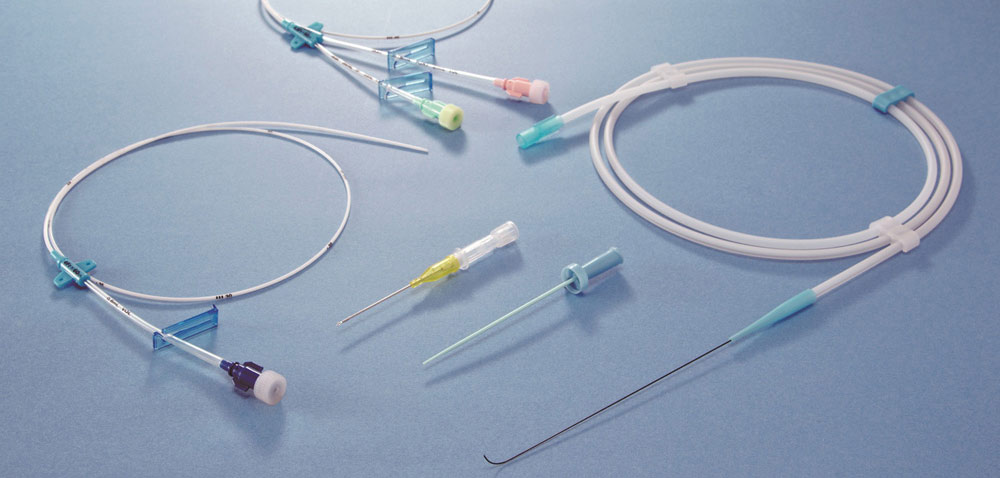Catheters are indispensable medical devices used across various healthcare settings for diverse purposes ranging from short-term urinary catheterization to long-term dialysis. However, their frequent use also leads to high risks of catheter-associated urinary tract infections (CAUTIs) and bloodstream infections (BSIs). The introduction of novel antimicrobial catheter technologies provides an innovative way to combat these healthcare-associated infections.
The problem of CAUTIs and BSIs
Catheter-associated infections are a major cause of morbidity, mortality and increased healthcare costs worldwide. CAUTIs account for nearly 40% of all healthcare-associated infections in the U.S. alone . Prolonged catheterization increases the risks enormously, with the chance of infection rising by 5-10% per day after the first week of insertion . Similarly, central line-associated BSIs affect an estimated 250,000 patients and lead to around 31,000 deaths annually in the U.S. . These infections increase hospital stays by 7-9 days on average and add $25,000 to $45,000 per infection in additional treatment costs .
Mechanism of Infection | Current Prevention Strategies
The main mechanisms through which catheters become a source of infection are migration of microbes along the external or internal surfaces of the catheter and drainage of contaminated urine or blood back into the urinary tract or bloodstream . Current strategies to prevent CAUTIs and BSIs involve meticulous aseptic insertion, secure fixation, sterile closed drainage systems, and minimizing catheterization duration. However, maintaining complete asepsis during long-term use remains impractical, and residual microbes continue colonizing the device surfaces over time.
Antimicrobial Catheters – A Promising Solution
To overcome the limitations of existing Antimicrobial Catheters prevention methods, antimicrobial catheters coated or impregnated with antiseptic agents were developed. The most widely researched technologies utilize silver, chlorhexidine, minocycline and rifampin coatings . These agents diffuse from the catheter material in microscopic quantities, creating a protective antibacterial zone around the device . In vitro and clinical studies have consistently shown the superior infection-prevention abilities of various antimicrobial catheter designs compared to standard devices.
Efficacy of Silver-Coated Catheters
Silver-coated catheters have emerged as an effective solution, backed by substantial clinical evidence. Over 25 randomized controlled trials comparing silver alloy or silver hydrogel coatings to non-coated catheters have been reported . A meta-analysis of these studies found silver catheters reduce CAUTI risk by 56% and CRBSI risk by 62% . The CDC also recognizes silver coating as one of only two strategies with adequate evidence to recommend for CAUTI prevention . In a 400-patient trial, the silver coating on urinary catheters lowered CAUTI rates from 16.1% to 4.8% . Similarly, data from over 5000 patients showed silver-coated central venous catheters decreased CRBSI incidences from 1.8% to 0.7% .
Expanding Use of Antimicrobial Catheters
Based on the promising infection control results, silver-coated catheters have gained wide acceptance and are beginning to replace standard devices in many clinical settings. Several hospitals in the U.S. and Europe have implemented antimicrobial catheter replacement programs and reported significant reductions in CAUTI and BSI rates . As the evidence continues accumulating favorably, experts recommend expanding the use of antimicrobial catheters wherever prolonged catheterization is anticipated . Manufacturers are also diversifying product lines with coatings on peripheral venous catheters, dialysis catheters, and other specialty catheters.
Improving Patient Safety and Healthcare Economics
By lowering the risk of catheter-associated infections substantially, antimicrobial catheters can notably improve patient safety, outcomes, and quality of care. They eliminate the need for frequent catheter changes aimed only at infection control. The reduced incidence of complications like sepsis also decreases patient morbidity, mortality and length of hospital stay. For healthcare systems, preventing even a single CRBSI translates to savings of around $30,000 by avoiding additional treatment costs . Nationally, if half of eligible catheters in the U.S. were switched to silver-coated versions, it could potentially save $416 million annually from reducing catheter-linked BSIs alone . As the value proposition strengthens, antimicrobial catheters are positioned to transform standards of catheter-related infection management.
Future Outlook and Conclusion
Going forward, expanding clinical experience and more robust health economic analyses will provide further clarity on the long-term impact of antimicrobial catheters. Research also continues on enhancing the coating effectiveness, optimizing elution kinetics and developing other novel impregnation methods. Additional antimicrobial agents like minocycline and chlorhexidine may expand the available options. Though standardization of coating types is still evolving, the fundamental approach of catheter antimicrobialization has revolutionized strategies for catheter-associated infection prevention. With growing evidence, regulatory approvals and revised guidelines, antimicrobial catheters are increasingly becoming the standard of care in clinical practice for safer and more effective long-term catheterization.
In summary, catheter-linked infections have remained a stubborn problem impacting patient safety and costs significantly. Antimicrobial catheter technologies provide a promising solution by actively preventing microbial colonization and biofilm formation on device surfaces. Extensive research validates their superior infection control abilities compared to standard catheters. With expanded clinical adoption and diversifying product lines, antimicrobial catheters are set to transform standards of practice and outcomes for millions relying on long-term indwelling catheter use. These innovative devices demonstrate the advantages of technology-enabled approaches for optimizing healthcare quality and efficiency.
*Note:
1. Source: Coherent Market Insights, Public sources, Desk research
2. We have leveraged AI tools to mine information and compile it


